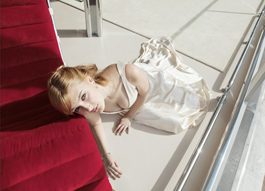
Brno attracts visitors to the Tugendhat villa via tram
 |
| photo: Eliška Kyselková |
The tram will operate on lines 2, 4, 5, 6, 9, 11, and 12, according to a press release from the city hall. It should gradually be visible on seven out of 13 tram lines in Brno.
The restoration of the villa cost 156 million crowns. This functionalist building is open to visitors every day except Monday from 10:00 to 18:00. Guides have prepared two tours - standard and technical. In the case of the latter, the tour route includes the villa's technical background such as the air conditioning machine room, boiler room, machine room for electrically operated windows, laundry, darkroom, and fur coat vault.
The admission fee is 300 or 350 crowns for adults, which is about a hundred crowns more than before the restoration. Mayor Roman Onderka (ČSSD) previously defended the ticket prices as reasonable. According to him, the Tugendhat Villa ranks among the most prestigious European monuments of modern architecture, and the price corresponds to similar tourist destinations abroad. The villa, inscribed on the UNESCO World Heritage list, belongs to Brno. It is managed by the Museum of the City of Brno, located at Špilberk. Reservations for tours can be made through the booking system available at rezervace.spilberk.cz.
The villa was designed in 1928 by German architect Ludwig Mies van der Rohe, and the owners moved in in December 1930. Just a few years later, they left the country out of fear of Nazism. Pavel Ciprian, the director of the Museum of the City of Brno, described the architectural solution at the festive opening as radical. According to him, Mies eliminated the boundaries between rooms as well as between interior and exterior, thus influencing the architecture of the entire 20th century.
 |
| photo: www.romanonderka.cz |
The English translation is powered by AI tool. Switch to Czech to view the original text source.
0 comments
add comment












